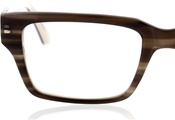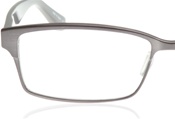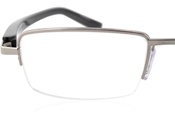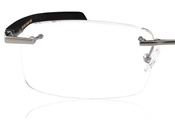Cellulose acetate (zylonite): The most commonly used plastic in eyeglass frames, cellulose acetate is relatively inexpensive, easy to work with, and comes in a wide variety of colors, textures, and patterns. The material is easily adjusted but tends to get brittle with age.
Cellulose proprionate: This is a lightweight material that can be injection molded making it ideal for intricate designs. Care must be taken when heating and adjusting frames made of this material because it will shrink and ruin with overheating.
Nylon: Many sports and safety glasses are made of nylon because it is virtually unbreakable and relatively lightweight. The material is, however, difficult to adjust and can be manufactured only in darker colors. It can also become brittle over time.
Optyl: This material is somewhat lighter in weight than cellulose acetate and is hypoallergenic, an advantage to skin-sensitive patients. Frames made of optyl are more difficult to adjust because the material can return to its original molded shape, and the frames may break easily if not heated properly.
Polycarbonate: Polycarbonate is 10 times more impact-resistant than conventional plastic or glass and is the material of choice for children's, sports, and safety glasses. Polycarbonate lenses are thinner and lighter than conventional plastic or glass lenses, and the material comes with built-in ultraviolet protection.
Kevlar: Developed by DuPont for use in bulletproof vests, this plastic can withstand high impact such as that experienced in sporting events. The material is limited because it will not shrink or stretch, and it comes in few colors.
















